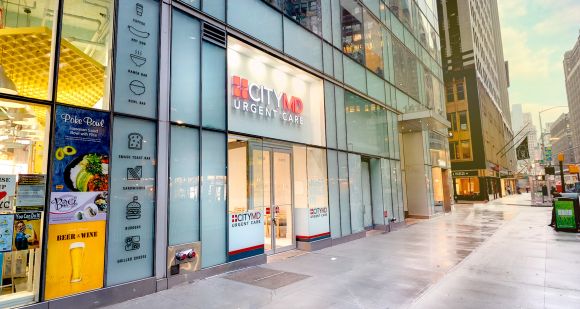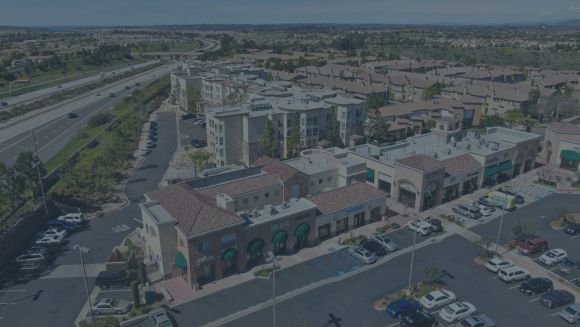The pandemic has been particularly hard on the restaurant industry, from national chains to local mom-and-pop operators. While some were able to adapt to changing consumer preferences for takeout, curbside and delivery, others found themselves without customers and were forced to shut their doors.
With so many restaurant closings, many consumers no longer have a favorite restaurant, and many centers no longer have dining options that drive the desirable foot traffic. What can owners and landlords do to attract new restaurants to their centers?
“By bringing in an entirely new restaurant chain or a new-to-the-market dining concept, retail property owners and landlords can entice consumers back to their centers,” said Scott Jana, senior vice president and head of platform sales for Buxton, a Fort Worth, Texas-based consumer analytics technology company.
Buxton’s platform consists of three innovative and complementary applications that combine demographics, psychographics and location information to give real estate executives an idea of their properties’ true performance potential. With insights from Buxton, owners and developers have the information they need to make smarter decisions regarding new and existing tenants.
“New dining options will act as a differentiator, attracting consumers to the center and hopefully restoring foot traffic to pre-pandemic numbers or better,” Jana said. “The question is: What restaurant concepts will be most successful at your center? You need more than foot traffic data to answer that question. You need consumer intelligence data.”
Americans Miss Dining Out
More than half of restaurant operators said it would be a year or more before business conditions return to normal, according to the National Restaurant Association. Food and labor costs are dramatically higher, making profit margins tighter. However, there’s tremendous pent-up demand among consumers who’ve missed dining out and are trying to make up for it now.
While the foodservice industry is forecast to reach $898 billion in sales in 2022, most restaurants have yet to experience a complete sales recovery to pre-pandemic levels. More than 60 percent of operators said their sales volume in 2021 was lower than it was in 2019, according to a January 2022 survey fielded by the National Restaurant Association. Only 25 percent of operators reported a same-store sales increase between 2019 and 2021.
The association’s survey revealed that the vast majority of operators in each of the six major restaurant segments reported a same-store sales decline between 2019 and 2021. (For reference, the segments are family dining, casual dining, fine dining, quick-service, fast casual and coffee/snack.)
Roughly seven in 10 operators in each of the three full-service segments said their 2021 sales were down from 2019 levels, while nearly six in 10 operators in the three limited-service segments reported similar results.
“The two most important drivers of sales are convenience and socialization, but there’s always going to be a tug of war or counterbalancing of the two,” said Hudson Riehle, senior vice president of research for the National Restaurant Association. “Nevertheless, consumers will always want to visit restaurants, whether it’s for the dining experience or to celebrate a special occasion. The industry, which showed it’s resilient and capable of meeting any challenges thrown at it, will adapt to whatever operating environments it encounters.”
Fierce Competition for Restaurant Tenants
By and large, owners have tried to be flexible with their restaurant tenants by offering reduced rent and rental abatements. Many have gone the extra mile to help these tenants by adding outdoor seating areas and patios to accommodate diners who aren’t ready to eat indoors yet.
It’s a smart move — the NRA survey found nearly four in 10 consumers say the availability of outdoor seating would make them more likely to choose one restaurant over a similar one. Moreover, roughly half of U.S. restaurant operators think the availability of seating on a sidewalk, parking lot or street will become more common within their segment this year.
Restaurants have more choices than they did a few years ago, which means that owners and landlords will have to be even more persuasive and persistent when pursuing new restaurant tenants. And they must be able to show that their center is a good fit for these expanding restaurant operators.
Many national and regional fast-casual chains no longer want inline space, but prefer the visible locations — typically endcaps and outparcels. Of course, there’s a limited amount of this type of space, so these chains are either paying top dollar for their ideal space or they’re looking for the next best thing, which creates an opening for owners that have vacant inline space.
“For owners and landlords, the competition for new dining concepts is fierce,” Jana noted. “When it comes to finding space today, restaurant operators can be choosy. Consumer intelligence can help owners and landlords make the case that their center is the best place for these operators to open a new location.”
Plenty of New and Expanding Restaurant Concepts
For owners dealing with increased pandemic-induced inline vacancy, the good news is that there are plenty of new and expanding restaurant concepts, both corporate-owned and franchised.
Chipotle Mexican Grill, for example, recently announced plans to expand by 7,000 units in North America. It’s targeting smaller towns, those with roughly 40,000 people or more, because they offer “better” unit economics than traditional Chipotle locations.
“Although many real estate owners have more vacant space than they want, it’s a great opportunity to create excitement at their centers by bringing in a new restaurant or two,” said Tim White, senior vice president of sales at Buxton. “There are a lot of exciting brands that are introducing people to new cuisines or expanding into areas that have limited dining options.”
Two examples of brands bringing new flavors to American palates: Marugame Udon, the world’s No. 1 udon concept, and Koibito Poké, the fast-casual concept known for its award-winning, build-your-own Hawaiian poke bowls.
Marugame Udon currently operates restaurants in Hawaii, California and Texas and is planning to expand its corporate-owned stores, as well as its franchise business. Likewise, Koibito Poké is looking to grow its footprint across the U.S. It recently partnered with True Capital Partners to expand with more than 300 locations in eight states. The company anticipates the first 120 stores will be in place in the next 24 to 30 months through the new partnership.
“The benefits of bringing new chains or new concepts to your center are fairly obvious, but at the same time, there are some risks involved,” White pointed out. “Because these newer concepts have limited track records, owners must look to consumer intelligence to determine whether these restaurant brands will find success in a particular location. Without that data, owners are making uneducated decisions and putting their centers and all their tenants in jeopardy.”
This article was originally published on The Commerical Observer's website on March 21, 2022.
Read the other two articles in this series: Empowering Owners and Developers With Crucial Data to Target Ideal Tenants and How Consumer Data Can Help Property Owners Attract Medtail Tenants


